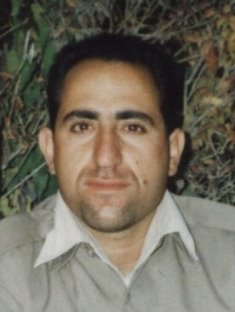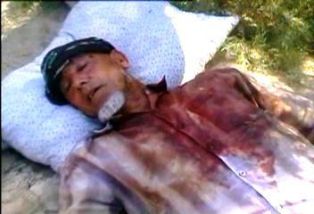
VIENNA (AFP) – The murder of a Kurdish opposition leader in Vienna, in which Iranian President Mahmoud Ahmadinejad's name has been dragged, is still shrouded in mystery two decades on.
Abdul Rahman Ghassemlou, the leader of the Democratic Party of Kurdistan -- an Iranian opposition party outlawed by Tehran -- was killed in the Austrian capital on July 13, 1989 by commandos who were never apprehended.
A number of witnesses have even linked Ahmadinejad to Ghassemlou's murder and those of two others but Tehran has persistently denied involvement.
German authorities have said Ghassemlou's murder, as well as the assassination of his successor Sadegh Charafkandi in Berlin in 1992, had been ordered by top Iranian officials.
German authorities have said Ghassemlou's murder, as well as the assassination of his successor Sadegh Charafkandi in Berlin in 1992, had been ordered by top Iranian officials.
Austria remains stubbornly tight-lipped on the case. And 20 years on, a former investigator on the case remains under pressure from the interior ministry not to give any interviews.
A former ministry official was similarly taciturn when contacted by AFP.
Ghassemlou and the two other men had come to Vienna to participate in secret peace negotiations with Iran, the third set of talks since the end of the Iran-Iraq war in 1988, in which the Iranian Kurds had taken Baghdad's side.
Following his murder and after initial interrogations, investigators became suspicious of two members of the Iranian delegation, but in what Austrian authorities have described as administrative errors, the suspects escaped.
Between instructions that were never given out, delayed arrest warrants, mistaken reporting and competition between the different police departments, the errors multiplied.
Between instructions that were never given out, delayed arrest warrants, mistaken reporting and competition between the different police departments, the errors multiplied.
One suspect, Amir Mansour Borzorgian, claimed to be a bodyguard for the Iranian delegation and sought refuge in the Iranian embassy in Vienna. He was discreetly allowed to leave the country months later.
Another, an Iranian "emissary" Mohamad Sahraroudi was wounded in the attack and therefore seen as a victim. He was given police protection until he left for Tehran on July 22, 1989.
The arrest warrants for both men were only issued much later.
"Austria ceded to pressure to safeguard its economic interests," claims Green party deputy Peter Pilz, who has written a book on the affair, where he accused high-ranking Austrian officials of ceding to Iran's demands.
Last month, Pilz presented to the media a testimony by a German arms dealer who claimed to have delivered weapons to Ahmadinejad in July 1989, shortly before Ghassemlou's assassination.
In a statement to Italian anti-mafia authorities in April 2006 while he was serving a sentence for arms trafficking in Trieste, Italy, the German said he delivered half a dozen light weapons during a meeting in the Iranian embassy in Vienna.
At this meeting were three Iranians, including "a certain Mohamed, who later became president of the Republic of Iran," he said, according to a copy of the translated testimony presented by Pilz.
A key question is why the Kurdish delegation took such little safety precautions.
A first meeting had taken place the evening before the murder in the same Vienna apartment, where there were no police or Kurdish bodyguards.
A first meeting had taken place the evening before the murder in the same Vienna apartment, where there were no police or Kurdish bodyguards.
"I believe Ghassemlou thought that (the then-Iranian President Akbar Hashemi) Rafsanjani was in a weaker position and needed to negotiate with him," suggests Chris Kutschera, a writer and a Kurdistan expert.
Ghassemlou's widow, Helene, regrets that potential witnesses were cowed into silence.
Ghassemlou's widow, Helene, regrets that potential witnesses were cowed into silence.
"We have to find documents in Iran with signatures" proving that the killings were carried on the regime's orders, she said.



























































No comments:
Post a Comment